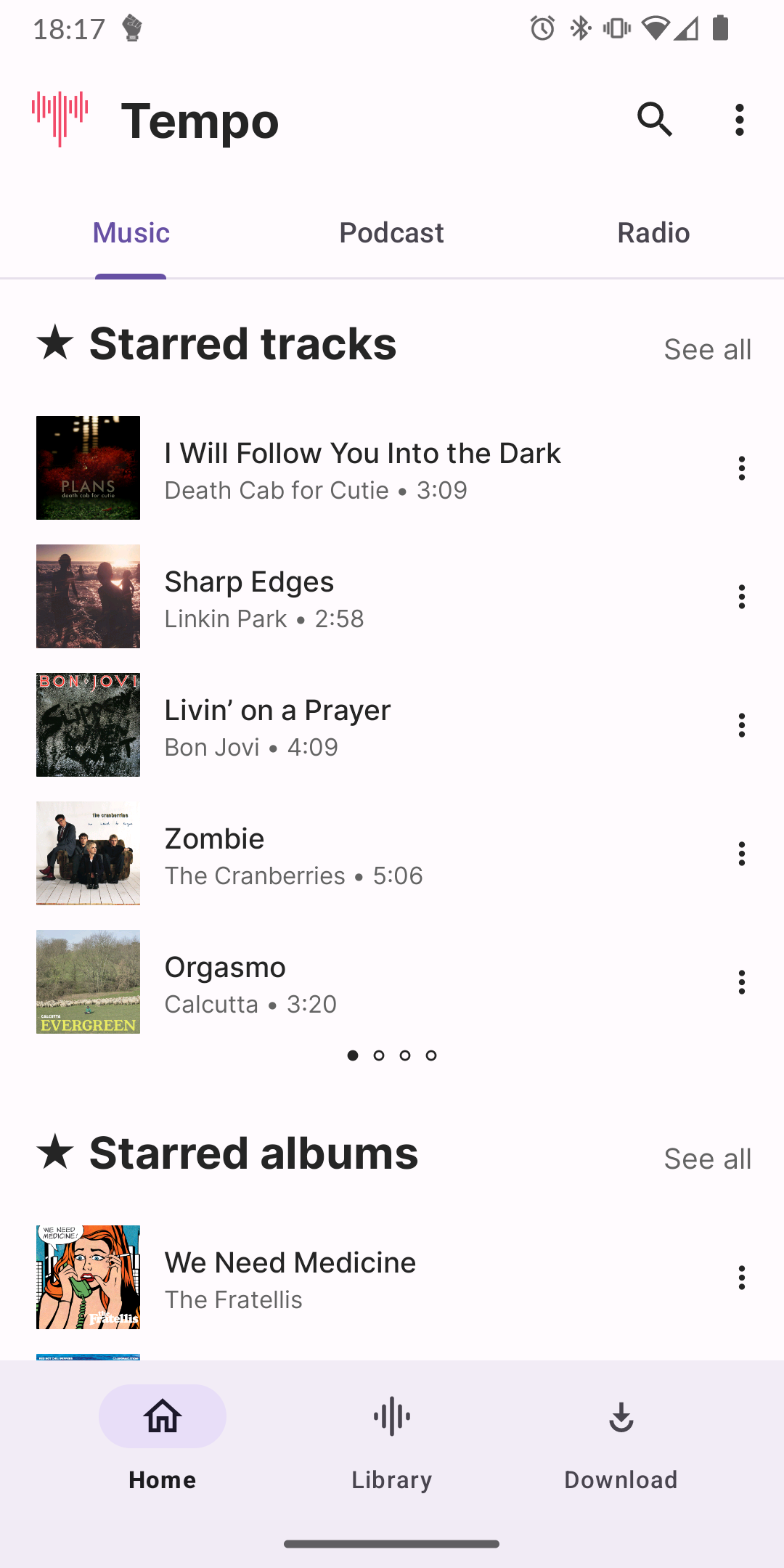Yes, it's been on my roadmap for a while. I also created a pull request several months ago to enter the repo but it was never accepted (it's also my fault because I didn't follow the verification process properly).
antoniocappiello
Hi and thank you for your appreciation! There is a buymeacoffee page for donations. Thanks again for the support!
Hello and thank you all for your appreciation! For anyone who asks, there is a buymeacoffee page for donations. It's really a pleasure to see my work recognized, especially when I've been practically stuck on Android Auto support for months... For the future, the plans are to fix some bugs already reported to me, add support for the OpenSubsonic API, and clean up the interface (giving the user the ability to show or hide elements as they wish). Fewer server calls should lighten up and speed up the app.
Also a special thanks to Google which with its lack of guides for its libraries makes development a real thrill!
For the curious who want to see the app without downloading it, here are some screenshots: https://imgur.com/a/i3zsqlG
Hey, thank you for your kind words. I was already thinking about implementing this feature, it's already on my to-do list :)
Hi, I'm glad you like it!
For self hosted music lovers, I would like to introduce you to Tempo, an open source and lightweight music client for Subsonic, designed and built natively for Android.
Hi, I'm glad you're interested! No, Android Auto is not currently supported, but it is on the to-do list, as is downloading from FDroid and possibly from the Play Store
Hi, I'm glad you like my app! The app is absolutely harmless, I can guarantee it, in the meantime I'm working to fix it. As for multiple servers, right now you can register multiple servers and jump into each one, without overlapping though. However, each user is separate from the other.





The OpenSubsonic project aims to extend and improve the classic Subsonic APIs in various ways: by adding new endpoints, clarifying existing APIs, or extending functionality. All while maintaining backward compatibility with the old APIs. Understanding whether the server supports the API, requesting the list of supported extensions and acting accordingly is the first step to integrating the OpenSubsonic API. Initial work was done with synchronized lyrics using an endpoint that does not exist in the classic version of the API but was introduced by OpenSubsonic.